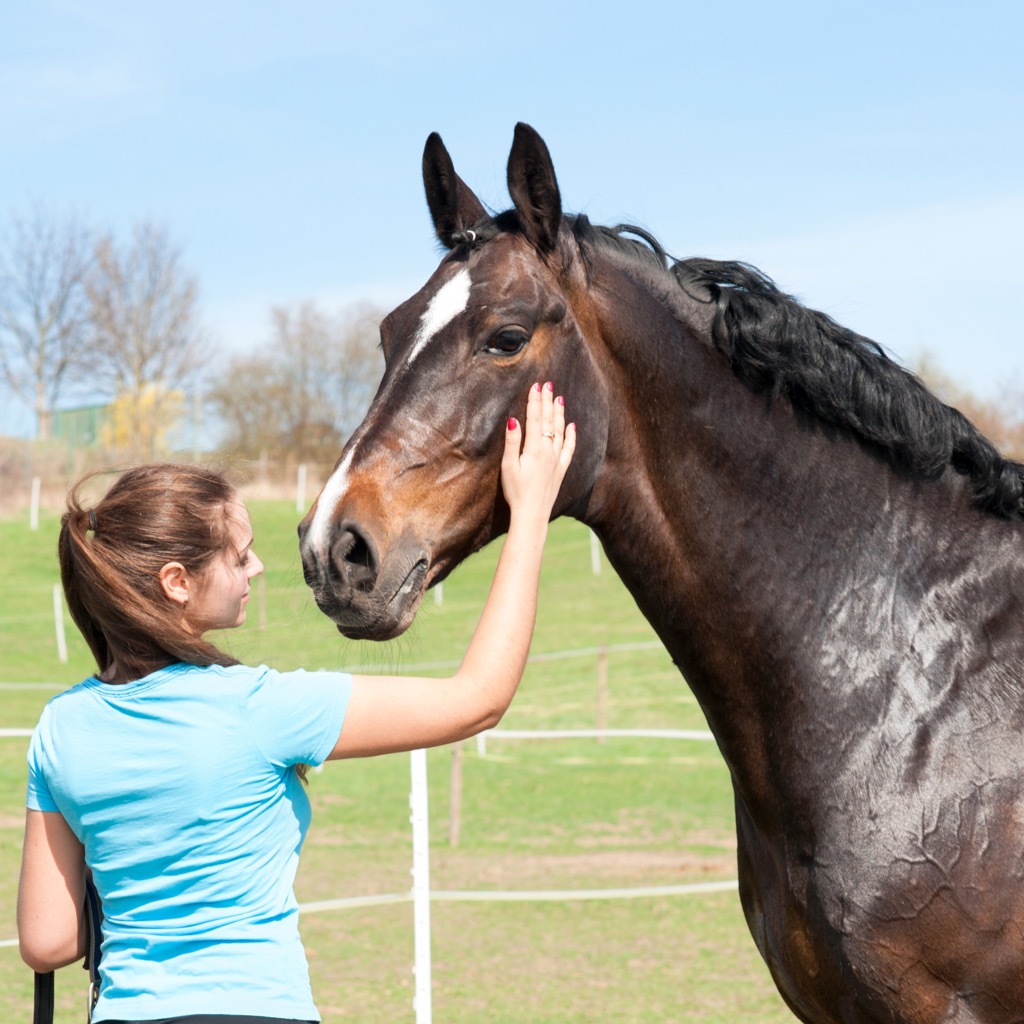Home > Horse World > How horses read human emotions
How horses read human emotions
- December 11, 2023
- ⎯ Mick McCluskey, BVSc, MACVSc
We’ve all been taught that horses can readily pick up on our anxiety, anger and other emotions from our body language. Now, research from England suggests that they can read our facial expressions as well.
In a study at the University of Sussex, researchers videotaped 28 riding school horses, ranging in age from 4 to 28, as they were shown four photographs of two male models, each with a positive (smiling) expression and a negative (angry) expression. Each horse’s heart rate was also monitored as he viewed the images. The trials were repeated two months later.

In analyzing the filmed reactions, researchers looked specifically for the horses to turn their heads to view the images with their left eyes. Previous studies have established that this so-called “left-gaze bias” indicates unease or a perceived threat.
“Information from the left visual field enters the right brain hemisphere, which contains areas specialized for processing threatening events,” explains Amy Smith, the doctoral candidate leading the study. “Research tells us that many vertebrates share this behavior. There are numerous theories as to why this is—it may be a more efficient way of processing information.”
The researchers found that when shown photographs of angry expressions the horses tended to exhibit left-gaze bias, and looked at the images with their left eye longer than they did the positive images. Also, their heart rates increased when they viewed the negative facial expressions. All of this indicates that horses recognize and react to human emotions expressed by facial cues alone, says Smith.
Whether this ability is innate or learned through interactions with people is unclear. “One of the interesting questions that arises from this work is whether the ability comes from evolution or from an individual’s lifetime experience,” says Smith. “I would say that there are elements of both. During the 6,000 years horses and humans have coevolved, horses may have adapted to understand us better, which may facilitate their ability to pick up on our cues. To really understand the relative roles of domestication and learning, further research would need to test the abilities of horses without much individual experience of humans.” Part of her ongoing work, she says, is analyzing equine responses to a wider range of human faces and emotions.
Although overall body language plays a critical role in horse-human communication, Smith advises people to consider the effect of their countenance as well: “This research should encourage us to be aware of our moods and emotions when interacting with horses and other animals, as it shows that our negative moods may have negative effects on their behavior and physiological responses.”
Reference: “Functionally relevant responses to human facial expressions of emotion in the domestic horse (Equus caballus),” Biology Letters, February 2016
This article first appeared in EQUUS issue #464,





